Content
Daphnia are crustaceans that are widely used in aquaristics, since they are a universal food for many inhabitants of the aquarium. These crustaceans live in natural conditions in ponds, but breeding daphnia at home is also possible. Most often, such a type of crayfish is bred at home as a type of daphnia moina, and it is precisely about how to breed it at home that will be discussed further.
Speaking about how to breed daphnia at home, it is worth preparing not only containers in advance, but also knowing how to feed these microscopic crustaceans and how to create the necessary conditions.
Container
A container with a volume of 15-20 liters is perfect for growing at home. In the process of choosing a container, the following recommendations should be taken into account:
- Choose a material that does not release hazardous chemicals into the water, such as polypropylene. Ideally, it is recommended to opt for a glass container.
- if metal containers are used, they should not be made of stainless steel.
- if you chose an ordinary glass aquarium, the area in contact with air should be as large as possible, since this is necessary for natural gas exchange and the supply of oxygen to daphnia.
- if, in the process of keeping daphnia, the container with it is kept outdoors under strong sunlight or in a house with powerful lighting devices, the container volume should be chosen at least 40 liters.
Physical conditions for keeping daphnia
- Salinity. Since these are freshwater crustaceans, then, accordingly, the water in an artificial reservoir for them must be fresh.
- Oxygen. Daphnia crayfish are tolerant of oxygen levels in the water, which can range from zero to saturated. In this case, it should be said that daphnia does not tolerate too active aeration of water in an artificial reservoir, with the release of small bubbles, as well as slow aeration with the release of large bubbles, which will form foam on the water surface.
- In matters of the level of ammonia in water and the pH level of water, the optimal indicators are the acidity of water in the range of 6.5-9.5 and the optimum indicators 7.2 - 8.5
- Speaking of the optimal temperature regime, the daphnia, the photos of which can be found above or in the specialized literature, can live in water with a wide temperature range. The optimum temperature for breeding is in the range of 18-22 degrees.
What to feed
If you breed daphnia at home, beginners naturally have a question - how to feed these crustaceans. Daphnia moina naturally feeds on bacteria and yeast, as well as microplants.
Bacteria can be obtained both from banana peels, food waste, and ordinary excrement, which are pre-soaked in water and infused for several days. As a rule, the water begins to become cloudy, which indicates the multiplication and growth of bacteria - the maximum effect will be achieved in 6-7 days.
Such turbid feed water is added to a container of 450 ml per 20 liters, every 5-6 days.
Yeast is another nutritious food. In this case, the simplest baker's dry yeast or wet yeast sold in packs will do. They are brought in at the rate of 28 grams per 20 liters of water - this is the daily norm for daphnia, while adding microscopic algae, which will prevent water pollution and serve as an additional nutrient for small crustaceans.
The advantage of yeast as a nutritional component is its ease of use and purchase, but it is less valuable than algae. Microscopic algae must be supplied to daphnia in large quantities - you yourself could see that in places where algae bloom in lakes and ponds, daphnia predominate in large quantities.
The advantage of using algae in nutrition is their ease of use - it is optimal to choose algae from the Scendesmus family, as well as chlorella, which grow in large numbers in a newly equipped, stocked aquarium. It is enough to scoop up water from such an aquarium, put it in a warm place under the sun's rays - the algae will actively develop, serving in the future as food for daphnia.
In water containing daphnia, you can add beet juice or cabbage, carrots - 1 tsp. per 5 liters of volume - this not only diversifies the diet of crustaceans, but also serves as a source of vitamins for them. The addition of liquid manure in small doses also gives an excellent effect, but experienced aquarists do not recommend adding milk or hay infusion - they stop the growth and reproduction of daphnia.
Aeration
Speaking about how to breed daphnia, novice aquarists may ask - is aeration needed when growing and cultivating crustaceans? Experienced experts say that it is desirable, especially when growing Daphnia moin. It enriches the water with oxygen, promotes the development of phytoplankton and prevents the formation of a film on the water surface. The main thing is that aeration should be of medium intensity, since a strong air flow will disturb them, and a stream with small bubbles will accumulate under the shell of the crustacean and raise them to the surface.
How to improve productivity in the development process?
This process is simple and even a beginner, puzzled by the question of how to breed crustaceans, can handle it. In this case, take into account a number of specific recommendations:
- Good aeration, with even air flow and no oversized or oversized bubbles. This is the first condition for increasing productivity in the process of reproduction of river crustaceans. In this regard, experienced aquarists recommend using an air-lift filter in a container with daphnia, which is used in cages with fry.
- Maintaining the cleanliness of the habitat and regularly changing the composition of the water - if the volume of the aquarium, which contains crustaceans, is large, it is recommended to replace ¾ of the water composition.
- Regular crop collection - this will help maintain the constant reproduction and growth of daphnia at the proper level.
- 24-hour daylight hours can also increase the growth rate and active reproduction. Of course, this is not a prerequisite, but it significantly increases the growth and reproduction of this river, microscopic crustacean. In this case, the minimum duration of daylight hours for them should be at least 18 hours.
- The mode and percentage of water replacement in containers containing daphnia - in this aspect, it is worth considering what feed is used, how much of an artificial reservoir and the amount of daphnia in it. But in any case, it is necessary to purify water from metabolic products of microorganisms and toxins.
As you can see, breeding daphnia, which serves not only as a nutritious and versatile food for your own fry and fish, but also as a great idea for a home business, is quite simple at home.
Breeding daphnia at home is not difficult at all. I draw your attention to the fact that in this publication we are talking about Daphnia moina. This type of daphnia is considered the most prolific and unpretentious, and the relatively small size of these crustaceans, for example, in comparison with daphnia magna, allows them to be used as starter food for fry of many fish species. To breed daphnia at home, you need an aquarium.
I breed daphnia in two 50 gallon aquariums, where in one of the aquariums I breed daphnia for the preparation of distributions for sale, and in the other as live food for fish. This is quite enough so that I can feed my fish with live daphnia 3-4 times a week, and I have about a hundred of them. And when I need to breed some kind of fish, I always have on hand the valuable starter food Daphnia. It should be noted that it is plankton: daphnia, ciliates and rotifers that are the most suitable starting live food for the fry that have swum.
Optimum conditions: dH 6-18 °, pH 7.2-8.0, t 20-24 ° C, low aeration, light 14-16 hours a day. As you can see, the hydrochemical parameters are quite wide, but even if they differ significantly, this does not mean that daphnia will not multiply in you. Daphnia have the ability to some extent adapt to new conditions of existence, in which they feel great and reproduce. I use lighting for daphnia from a 40 W fluorescent lamp.
The aquarium rack is located in the hallway, where natural light is minimal. Daylight hours for my daphnia lasts approximately 16 hours. I do not specifically regulate the daylight hours and turn on the light for daphnia when I get up to work, and turn it off when I go to bed. I turn on aeration only when a film appears on the surface of the water or to better mix the given yeast.
I feed daphnia once a day with dry baker's yeast, after dissolving them separately in water, I add daphnia to the aquarium until the water is slightly cloudy. If you give more feed, then the part of the yeast that has not been eaten will precipitate, which the daphnia do not eat. The water temperature for breeding daphnia is also suitable at room temperature in the aisles of 23-25 ° degrees, but when the water temperature rises to 26-28 ° degrees, the reproduction rate of crustaceans will noticeably increase.
Daphnia water can be changed in whole or in part in the aisles of half the volume or only a third of the aquarium. I change the water for daphnia after a visual assessment of the condition of the crustaceans. In old water with a high organic content (I also call this water waste), the reproduction of daphnia is inhibited, and the movement of crustaceans becomes sluggish, and this indicates that it is time to change the water.
In the water suitable for breeding daphnia, on the contrary, the movement of crustaceans is frisky, and they move very quickly throughout the aquarium. In such water, daphnia actively feed and reproduce surprisingly quickly. If you do not want to buy a breeding of daphnia, but decided to look for these crustaceans on your own in natural reservoirs to breed at home, you need to use some information. The exact habitat of Daphnia is temporary small bodies of water.
Daphnia can also live in artificial reservoirs created for watering livestock. If you surveyed the area you need and did not find a reservoir with daphnia, but you know well that there is a place where there was once a reservoir with daphnia, feel free to go there and take some upper soil in which daphnia eggs are likely to have survived. And if this once disappeared reservoir was on a slope, and is now washed by spring waters, the chance that the Ethipians have survived in the ground is reduced to zero.
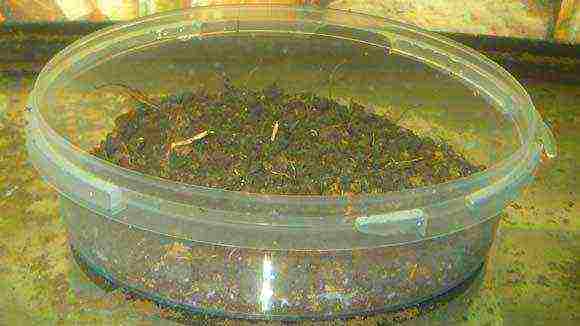
Bring the soil home, pour it into a small bowl and place it in a specially prepared aquarium, always equipped with a lamp. In a few days, the newly born daphnia will appear in the aquarium, and you will need to feed them with baker's yeast, and I want to sincerely wish you that these were moins.

Once I managed to get Daphnia moin from this dry reservoir in the ground, which Daphnia eggs had been stored for 10 years.
I was very happy then and even shot a small video of the crustaceans who returned, as they say, into the light of day.
Daphnia once lived in this long-dry reservoir, and daphnia eggs are still stored in its upper layer of soil.
What daphnia eat
Daphnia cladocerans can live in non-flowing permanent and temporary reservoirs, in which, as a rule, fish are not found. They can also inhabit reservoirs specially created for watering livestock. Distributors of crustaceans can be various migratory birds and animals that drank water from reservoirs where daphnia is found.
There are fish in this pond, so there is no daphnia in it.
Transferring daphnia eggs in their stomachs to other geographic regions, which got along with water and are capsules that are resistant to chemical destructive effects, they leave along with the feces of birds and animals that are quite capable of continuing their life once in the water. In water bodies on warm sunny days, it quickly warms up, is saturated with bacteria and turns green from the presence of unicellular algae (endorin, anzhistrodeemus, etc.) in it, which, like bacteria, are natural food for daphnia crustaceans.
Anyone who has previously fed their fish with daphnia probably noticed when daphnia launched into an aquarium with water clouded by a bacterial outbreak or green from algae water, in a matter of minutes, cleanse the water, making it completely transparent, and this indicates that the daphnia in the aquarium have been eaten all bacteria and algae. With the onset of autumn, changes occur in reservoirs that affect the further existence of daphnia.
In autumn, a sharp drop in temperature occurs, daylight hours are reduced, and for this reason, bacteria stop multiplying in water bodies where daphnia is found and green algae die, and the water, freed from bacteria and algae, becomes noticeably transparent, dooming daphnia to starvation. A decrease in the number of crustaceans in the autumn is mainly due to a decrease in food in the reservoir, and not a low water temperature.
In support of this, I conducted an experiment. I poured cold tap water into a liter jar and poured half a teaspoon of the dilution (river sand containing ephippia) and put the jar on the windowsill in the kitchen. Considering that it is winter time, and I open the kitchen window at night, the water temperature in the bank did not rise above 17 ° C. But, despite this, the crustaceans were born in the bank.
How to feed daphnia
You can feed daphnia at home with baker's yeast. The yeast is preliminarily dissolved in water and gradually introduced into the cultivator for daphnia. Also, as indicated in the special literature, daphnia can be fed: chlorella (200 thousand cells / ml). Horse manure can also be used: 1.5 g / l, adding another 0.8 g / l every 10 days. But the listed food is not the only one for breeding daphnia at home.

Dried baker's yeast must be dissolved separately in water.
I recently noticed that another food can be used for daphnia and that is boiled yolk. The fact that daphnia can eat boiled yolk, I noticed quite by accident when I was breeding fire barbs. Then among the floated fry that I fed with daphnia there were several fry very small - lagging in growth and I decided to feed them with yolk, but to my surprise the most microscopic particles of yolk became daphnia.
Daphnia not only ate the yolk, but also multiplied quickly, and at some point I even got scared, thinking that in a few days the multiplied Daphnia would crush the fry. But everything worked out and the fry on live food managed to quickly grow and get stronger and, being already full, they just hunted for daphnia, reducing their number, and the ampullaria snails that fell to the bottom of the wounded crustaceans were picked up. It is not difficult to prepare food from boiled yolk, and the process of cooking and feeding daphnia is the same as when feeding fry.
To prepare feed from the yolk, it is necessary to boil a hard-boiled chicken egg and extract the yolk from it. Then break off a small piece from the yolk and knead it in a half-liter jar of water.After waiting a little, pour out the muddy water from the jar, pour fresh water, and repeat the procedure.
When, after adding pure cloudy water to the jar, it will no longer be necessary to track the moment when large pieces of yolk settle to the bottom of the jar, and the microparticles will still remain suspended and drain the water into the daphnia cultivator, leaving a sediment of large yolk particles at the bottom of the jar. You can also give daphnia yolk with a small content of turbid water, but this must be done carefully, otherwise the water in the cultivator aquarium will deteriorate.
The yolk rinsing procedure can be simplified by using a tea strainer. It is done like this: In a strainer you need to put a piece of yolk and rinse the strainer in a jar of water. As a result, only small particles of yolk will get into the jar. When feeding daphnia with boiled yolk, you need to know that an overabundance of yolk in an aquarium with daphnia can cause rotting water and the death of crustaceans. Green algae can also be grown to feed daphnia at home.
How to make green water for daphnia feed
To provide daphnia with natural food, you can prepare green water yourself. To do this, you will need a small aquarium or another container filled with aquarium water. Why does the water have to be from the aquarium? The fact is that aquarium water is similar to water from a natural reservoir.

Such water already contains a small amount of dormant algae, which, when favorable conditions are created for them, will begin to actively multiply, and the dissolved organic matter contained in the aquarium water will serve as food for them. For the reproduction of green algae, you will also need special lighting in the spectral composition of light, which should be dominated by red rays.
For this purpose, a luminaire with an installed 40-60 W incandescent lamp is well suited. The duration of daylight hours for the development of algae should be at least 8-12 hours. In spring and summer, to save energy, the algae cultivator can be placed in direct sunlight, such as on a windowsill.
But it will always be wiser to cultivate algae and daphnia in the same aquarium at the same time. The concentration of algae in the cultivator can be regulated by the intensity of illumination and the duration of daylight hours. However, it should be remembered that daphnia do not tolerate water with a high organic content, and algae, on the contrary, always develop better in such water.
If during the cultivation of daphnia such moments arise when there is an excess of algae, and daphnia does not multiply, this indicates that the water has become old, contains a lot of dissolved organic substances and it is time to replace it with fresh one.
Buy culture of Daphnia
I present to you the culture of Daphnia moina in the form of a sand bed containing Ethipian eggs. Daphnia moina rectirostris - larva about 0.5 mm, males up to 1 mm, females up to 1.7 mm. Ripen in 3-4 days. Up to 7 litters are given every 1-2 days. Clutch contains up to 53 eggs. Life expectancy is 22 days.
To breed moin at home, a pinch of sand will be enough, which must be added to a jar of water and placed on the windowsill. Leftover sand can be stored in a dry place at room temperature for as long as desired. For example, I managed to get a mine from their eggs (Ethipia) buried in the top layer of the soil of a dried-up reservoir for 10 years.
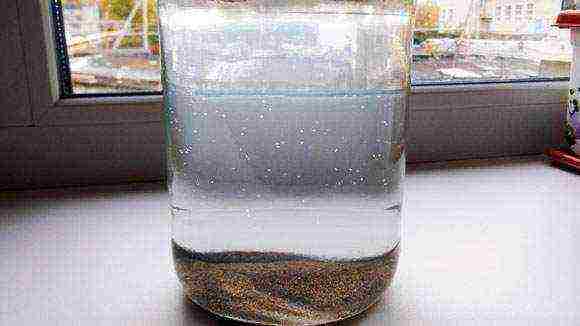
On the third day, when crustaceans appear in the bank, they must be fed with baker's yeast.
After a week, when there are more crustaceans, they can be transferred to the cultivator aquarium, where they can continue to feed. Lighting is suitable both from a fluorescent lamp and natural. As well as all cladocerans, this species of daphnia is considered the most complete in terms of biochemical composition, which favorably affects the health of fish even with short-term feeding.
Inhabits small permanent and temporary water bodies of the Volga region.Small, soft-bodied breeds quickly and is well eaten by full-aged fish species and newborn fry, being a real find for fish breeders. You can buy the culture of Daphnia moina from me by ordering it from the page of my blog. More details can be found by following this link.
Description, structure of Moina's crustacean
- Scientific classification
- Kingdom: Animals
- Type: Arthropod
- Class: Crustaceans
- Order: Daphniiformes
- Family: Moinidae
- Genus: Moina


Moina (lat. Moina) is a genus of lower bivalve planktonic crustaceans from the cladocera superorder. Outwardly, the shape of the body has the outlines of two roundness - the head and the body. The entire surface of the body is covered with bristles. Sexual dimorphism is strongly pronounced - females are larger than males and reach up to 2 mm, and those do not exceed 0.6 mm. Moreover, males have relatively long first antennae.
On the drosal side (on the back) of the females there is a brood bursa in which eggs and embryos develop. Unlike daphnia, mya has a bag that is always open.
Nauplii moina are smaller in size than Artemia nauplii and slightly larger than adult rotifers of large species. They develop and grow rapidly. They become sexually mature 4-9 days after hatching, depending on environmental conditions. Young and adult crustaceans are eaten by most fish species (of suitable size).
The clan Daphnia and Moina are related. Their representatives are found everywhere and they are usually called daphnia.
Moina can withstand temperatures from 5 to 31 ° C, but the optimal temperatures are from 22 to 28 ° C. This crustacean is quite tolerant of poor water quality and lack of oxygen. By the way, with its lack, they turn red, due to the synthesis of hemoglobin. Its amount increases not only with a lack of oxygen, but also with an increase in temperature and population density.
At a temperature of 20 ° C, they ripen for about 5 days. The life expectancy of the crustacean is about 22 days, less often up to 2 months, during this time the moina gives new offspring, numbering up to 30-50 embryos, with an interval of 2-3 days.
Moins reproduce sexually and asexually. Under optimal conditions, the culture consists of females, which reproduce without the participation of males. Males and ephippiums appear under unfavorable conditions and sexual reproduction begins.
Moins have a number of beneficial biological properties that make them popular in aquaculture. For fish species with large newborn fry, these crustaceans are the "starting" food, and for small ones they can be the main food when rearing juveniles after the "start" on ciliates, rotifers and nauplii (i.e. from about 1-2 weeks to 3-4x months.
In addition to this, an important feature of the moin is that they are the fastest-breeding crustaceans, their life cycle is short, and they can exist at relatively high densities. So, when creating optimal temperature and feeding conditions, it is possible to achieve a "flash" of culture up to 100-fold growth of biomass in 5 days. After the population reaches a certain maximum, the culture of the moina requires “recharging”, because otherwise it quickly (in 1-2 days) fades away, sometimes up to complete disappearance.
The maximum recorded density of daphnia is 500 pcs per liter. In turn, the maximum number of mine is 5000 pieces per liter. This is a very good property for intensive cultivation.
The daily productivity of Moina and Daphnia crustaceans on nutrient media of yeast and ammonium nitrate was, on average, 100 - 110 grams per cubic meter for Moina, and 25-40 grams per cubic meter for Daphnia. And the daily increase in the biomass of moina on phytoplankton was 375 grams per cubic meter, in daphnia it is 3-4 times less.

How to feed Daphnia Moina? Moina feeds on various bacteria, yeast, microalgae (phytoplankton). Crustaceans grow especially quickly and well in an environment with a sufficient amount of all types of the listed food.
Bacteria can be obtained on dry banana peels, nettle leaves, lettuce, carrots, dry fish food (flakes, pellets), various edible waste, etc.
Yeast is sold in stores, they use baking fast-acting dry or yeast in packs (wet), they must first be kept in the refrigerator / freezer, until they acquire a brown color.
Microalgae (phytoplankton) is a cloudy green, blooming water in which these algae thrive. (See photo)
Nutritional value of the moina crustacean. Nutritional value varies greatly depending on age and types of growing media. But on average it is: protein - 50-70% of dry weight, fats - in an adult 20-27%, in young ones - 5-10%.
see below live food nutritional table

How to breed a mine? | What volumes to use, lighting | Daphnia cultivator This crustacean, according to its qualities, is most suitable for breeding at home. Crustacean cultures are kept in containers of 3-5 liters or more. The depth in which should be no more than 0.9 meters, the best option is 0.4-0.5 meters. The low water level allows better light penetration, activates the development of microalgae. It also provides a large surface area for better oxygenation of the water.
For keeping a small population, plastic, cut-off five-liter water bottles are excellent.
It is recommended to keep crustacean cultures in places with diffused light or shade; direct sunlight for daphnia, in general, is not desirable. Outdoor cultivation involves covering the containers with some kind of material to protect against rain and a net to protect against insect pests.
All containers must first be disinfected and / or dried in the sun.
For this, ordinary soda, salt are suitable, you cannot use detergents, powders and other chemicals!
Moina is sensitive to pesticides and metals (copper, zinc), detergents, bleaches, and other toxic materials. The ingress of which into the water is unacceptable.


Water preparation | What water to use for breeding daphnia? Water for cultivation can be used with settled tap, thawed (rain), spring or filtered lake and river water. It is advisable to boil water taken from open sources.
Average indicators of water for the cultivation of daphnia: dH 6-18, pH 7.2-8.
Do not allow other organisms to enter the cultivator, especially predatory ones, for example, cyclops.
Aeration | Do I need aeration in a cultivator in Daphnia? When cultivating daphnia, aeration is desirable, but not required. Especially for Moina.
It enriches water with oxygen and keeps food particles in suspension, and also contributes to the development of phytoplankton. In cultivators with aeration, the density of the crustacean increases. Do not make the sprayed bubbles too small, they will accumulate under the shell of crustaceans and drag them to the surface. Also, you can not put strong aeration, which will disturb daphnia.
Breeding methods for daphnia moina | Types of feed | How to feed daphnia moina The most common types of food were described above in the article.
Personally, I use a few simple ways:
- This is a breeding of daphnia on dry banana peels, carrots, lettuce leaves: (suitable if you cannot pay enough attention to the crustaceans and feed them every day) the number of moina on the peels is lower than on yeast.
Feeding banana peels does not require close attention to the crop and constant addition of feed to the crop.
Wrap dry peels / carrots / lettuce in a cloth and hang (you don't need to hang it up, just put it) into a cultivator, fill it with settled water and leave it for a couple of days. Not much crust should be used, literally 1-2 cm² per 5 liters (depending on the density of the culture), otherwise crustaceans will not cope with the rapid growth of bacteria, there will be overfeeding.This type of feed is used once, until complete decomposition, after which it is necessary to hang fresh.
Banana peels are not added all at once, but as the number of crustaceans increases, in order to avoid fermentation, decay of water.
- And feeding with yeast (dry baking fast-acting) We dilute a small amount of yeast with settled water in a container and pour evenly, as we need, into the cultivator, until it becomes slightly cloudy! This procedure is done every 1-2 days (or less often), when the water is completely brightened. We try not to overfeed.
Adding flowering (green) water, spirulina or chlorella powders to the cultivator increases the nutritional value of the crustacean. Green water can be added when starting / restarting the cultivator, or when changing the water in it. Chlorella or spirulina powders and tablets are great too.
If you catch mine with a net, and do not drain and filter like I did, then you need to make changes, about once a week.
Also, once a month (depending on the volume - the more, the less often) it is necessary to restart the cultivator.
ATTENTION! In case of an overdose of feed, the water begins to rot, acquires a sharp, unpleasant odor. In this case, restart the cultivator and reduce the feeding dosage. Better not to feed than to overfeed!
More ways of feeding daphnia, types of feed and nutrient media. A number of common culture media are presented below. Perhaps one of them will work better than the rest. It is possible that, depending on the cultivation conditions, the initial concentrations will require adjustment. The following nutrient concentrations are calculated per 380 liters. Five days later, you must enter from 50 to 100% of the original mixture.
1. Baker's yeast 8.5-14.2 g;
2. Yeast (8.5-14.2 g) and ammonium nitrate (14.2 g);
3. Tablets of alfalfa or flour (42.5 g), wheat or rice bran (42.5 g) and yeast (8.5 g);
4. Dry cow dung or sewage sludge (142 g), wheat or rice bran (42.5 g) and yeast (8.5 g):
5. Dry cow dung or sewage sludge (142 g), cotton seed meal (42.5 g) and yeast (8.5 g);
6. A mixture of dry horse or cow manure (567 g) or sewage sludge (567 g);
7. A mixture of dry poultry or pig manure (170 g);
8. Baker's yeast (6 g), spirulina powder (3 g). This mixture is applied during the first two days, and then every other day until the moment of collection of crustaceans. Spirulina and yeast powder should be added to warm water and left to cool for 30 minutes. The nutrient mixture is introduced into the moin culture through a fine-mesh net (cells 100 µm). It will retain large undissolved pieces of yeast and extend the life of the culture.
Organic fertilizers are usually preferable to mineral fertilizers because they promote the development of bacteria, fungi and detritus, as well as phytoplankton. This variety of nutrient particles will more fully satisfy my nutritional needs. Mineral fertilizers can be applied one at a time, but they work best in earthen ponds or cisterns. Fresh manure is the best fertilizer as it is rich in organic matter and bacteria. However, some animals are given feed additives that inhibit the development of fly larvae in the feces. Once in solution, these additives can inhibit the growth of the moin population. It is advisable to dry the manure before use. Organic fertilizers available on the market, such as dried cow dung and sewage sludge, are suitable for cultivating moin. Despite the fact that manure is most often applied as a nutrient medium, yeast, alfalfa and bran are equally effective. Activated (baker's) yeast can be found easily in any grocery market. Coarse organic fertilizers such as manure, sewage sludge, hay, bran and cottonseed meal are usually suspended from the top of the aquarium in mesh bags.The material of the bag is burlap, muslin, nylon or other fabrics. In this case, it is better to choose nylon or other synthetic fabrics, which, unlike cotton or burlap, will not deteriorate in water.
Over-saturation of the medium with nutrients will lead to premature deterioration of the water, so it is best to start by frequently adding a small amount of top dressing or fertilizers with a gradual increase in portions. If overfeeding is accompanied by the growth of fungus in the aquarium, it is necessary to remove the fertilizer bag from it. The active development of the fungus requires an immediate restart of the culture. Population inhibitors are often an increase in pH to 9.5 due to the development of algae, or an increase in ammonia concentration. The acidity of the medium can be reduced to 7-8 units by adding acetic acid.
Where can you buy Daphnia moina culture? | Efippia / daphnia moina eggs for breeding at homeInstructions for removing Moina and Daphnia from eggs. 1. We take a small, low capacity. Suitable: 1 liter ice cream bucket, food storage container, etc.
2. Prepare the container. We clean, rinse. You can use baking soda / salt. Do not use any cleaning agents, powders or other chemicals. The container is ready!
3. Take a packet of ephippia, pour out the contents and fill it with clean, settled water. Rainwater, melt water is also suitable. It is advisable, but not necessary, to cool the water. This is believed to further stimulate the crustacean to hatch, as does oxygenation of the water. You can put the jar under the lamp, as an additional light, but so that it does not overheat the water.
4. On the second day, add food. I use saf-moment yeast for baking. A small amount of yeast is diluted in a container and added to the cultivator with eggs, until a barely noticeable cloudiness. You can also use dry banak peels, carrots, lettuce as feed, see below for how to feed them.
5. Nauplii appear within 36-72 hours.
6. After 7-10 days, the crustaceans grow up, and they can already be transferred to a larger cultivator.
Store ephippia in a cool dry place, you can in the refrigerator.
You can buy Daphnia eggs from us for obtaining live culture of crustacean and breeding at home.

Creating conditions for breeding daphnia at home
To breed daphnia at home, you need enameled dishes or a plastic bathtub, tub or vat. It is half filled with water and a handful of half-rotten hay or fallen leaves are placed at such a stage of decomposition when they no longer float in the water, but sink to the bottom. On this mass, bacteria will develop, which will go to food for crustaceans. For additional nutrition, add a piece (the size of a hazelnut) of feed or baker's yeast, 15 g per 1 m of water, and shake them evenly. Yeast is added every two weeks as the water becomes clear. You can put a couple of snails in the bath, they will act as orderlies.
Daphnia caught in a stagnant reservoir, about 50 crustaceans per hundred liters of water, are allowed into the bath. If the surface of the water is covered with mold or oily sheen, it is necessary to at least partially change the water or put in a not too strong aerator. Such an installation will feed about a hundred medium-sized fish.
If less food is required, it is recommended to take small aquariums of 12-15 liters. In one of them, in September-October, several elodea plants are planted and some daphnia are allowed. Until mid-January, the vessel is not touched, then they are placed in a warm place and the crustaceans are lightly fed with yeast. When daphnia multiply strongly, some of them are transferred to another aquarium, planted with elodea, and the remaining crustaceans begin to feed the fish. Every two to three months it will be possible to get a new culture of Daphnia. Two such plantations with their "crop rotation" will be enough for six months.You can also breed daphnia in five-liter jars and even in ordinary glasses.
Water temperature when breeding daphnia
The water temperature must be maintained at the level of 20-25 C. The color of the water should be greenish (from decomposed microscopic algae that daphnia feed on) or brownish. A more intense brown color is an indicator of unfavorable conditions; feeding with yeast should be temporarily stopped. Usually the water will return to its normal color after a day. Once or twice a week, ammonium nitrate should be added at the rate of one gram per hundred liters of water. It is good to add the water in which the meat was washed - this promotes the development of microorganisms.
